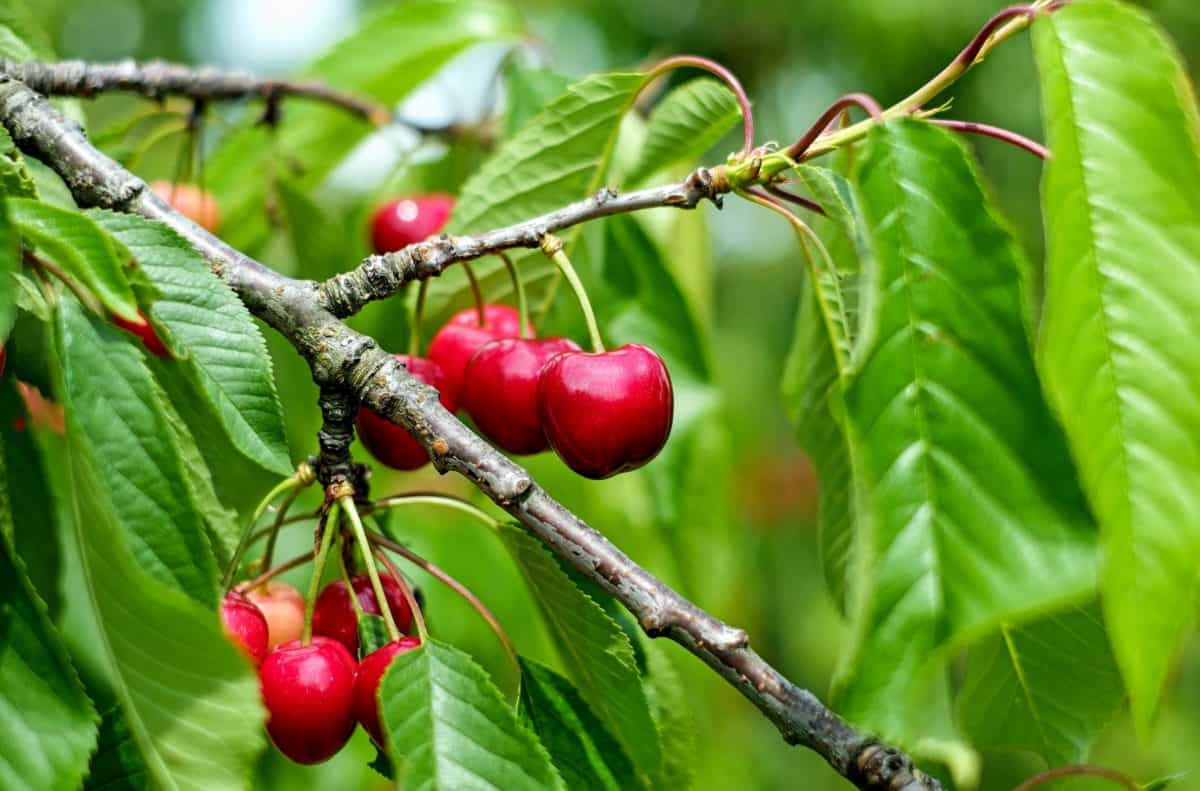
The cherry tree is a fruit tree, yes, but it has a very high ornamental value. It is a plant that in spring is filled with beautiful flowers, that in summer provides us with shade and that in autumn the green color of its leaves gives way to different shades of oranges and reds. As if that were not enough, cherries are a delicious snack that can be enjoyed during the hot season of the year.
Has it all. It even resists moderate frosts without any problem. For this reason, we want you to know in detail the cherry tree, its varieties, its cultivation, and ultimately, everything you need to know to be able to plant a specimen in the orchard -or in a pot- and make it last ... well, all the years it has to last.
What is a cherry tree like?

Image - Wikimedia / H. Zell
The cherry tree is a deciduous tree that grows wild in Europe and western Asia. Apart from being called that, it also receives other names such as wild cherry, sweet cherry or mountain cherry. Its scientific name is Prunus avium, previously Prunus cerasus var. avium. It grows up to 30 meters in height, and develops a rather branched crown, with a more or less rounded and wide shape.
The leaves are between 6 and 15 centimeters long and 3 to 8 centimeters wide, and have a serrated margin, as well as a greenish upper surface and a pubescent underside. In autumn they turn orange or reddish in color before falling to the ground.
What is the cherry blossom like?
Its flowers appear in spring, before the leaves sprout or at the same time as these. They are white and gather in inflorescences called corymbs. To be able to bear fruit they need the help of pollinating insects, such as bees, unless it has been grafted.
And the fruit?
The fruit is a drupe that we know as a cherry. It is a globose drupe with dark red skin, about a centimeter in diameter, and contains a very hard, inedible seed (and in fact, it is poisonous as it contains hydrogen cyanide, which can kill a person). It finishes ripening in summer.
The cherry it is eaten fresh or canned.
How many varieties of cherry trees are there?
Of sweet cherry there is only one, which is the Prunus avium, but depending on the variety or cultivar, we can find many types that need more or less hours of cold (that is, hours in which temperatures have to remain low so that they can later bear fruit); and there are even some that are sweeter or smaller than others. Let's get to know them:
Extra-early and early cherry trees
Early cherry trees are those whose fruits ripen very early, coinciding with the second half of spring and the beginning of summer.
- Burlat: it is a variety native to Spain, and it is the one that is most cultivated. Not only does it taste great, but it is also resistant to cracking. It requires to spend between 800 and 1000 hours of cold.
- Cristobaline: another Spanish variety. Highly recommended for mild climates, since spending around 300-350 hours of cold in winter is enough to bear fruit.
- Early bigi: it is a self-sterile variety, with a taste a little less sweet than what we are used to, but with a large size. It is sensitive to the cracking of the fruits. The good thing about it is that it "only" needs to be cold for about 500 hours.
Mid-season cherry trees
Mid-season ripening cherries are those that are ready for consumption between early and mid-summer.
- Picota: also comes from Canada. It is a variety that produces many fruits, of good flavor and size, and that also does not tend to crack. It requires about 1000-1100 hours of cold.
- Summit: It is a variety from Canada, very common, but its pollination is a bit difficult because it is self-sterile, and finding a variety that blooms at the same time is not always easy. Of course, once it is achieved, the tree will produce good-sized fruits. It requires about 1000 hours of cold.
- SPC 342: Originally from Canada, it is very similar to the Summit cherry, but with the difference that it is very productive and produces firm and large fruits. The "drawback" that we can find when we grow it is that it needs to be cold for about 1000 hours.
Late and extra-late cherry trees
The late, or extra-late, cherry trees are those that ripen between mid and late summer.
- Ambrunese: the Spanish Ambrunés cherry is a variety that we also know as Cereza del Jerte. It has an exquisite flavor, and it is of a good size. And that's not to mention that it doesn't usually crack. It needs about 800 hours of cold.
- Napoleon: it is a very characteristic German cherry tree: instead of producing red cherries, it produces red and yellowish ones. It is interesting for its productivity and resistance to cracking, but it is almost tasteless. It needs about 1100 hours of cold.
- Sunburst: it is a self-fertile variety native to Canada. It produces large cherries, resistant to cracking, and they are also soft. It is a tree that needs to spend about 1100 hours of cold a year.
Cherry tree care
How is the cherry tree to be cared for? As you surely have many doubts about it, below we will talk about all those aspects that you have to keep in mind when maintaining your tree:
Location
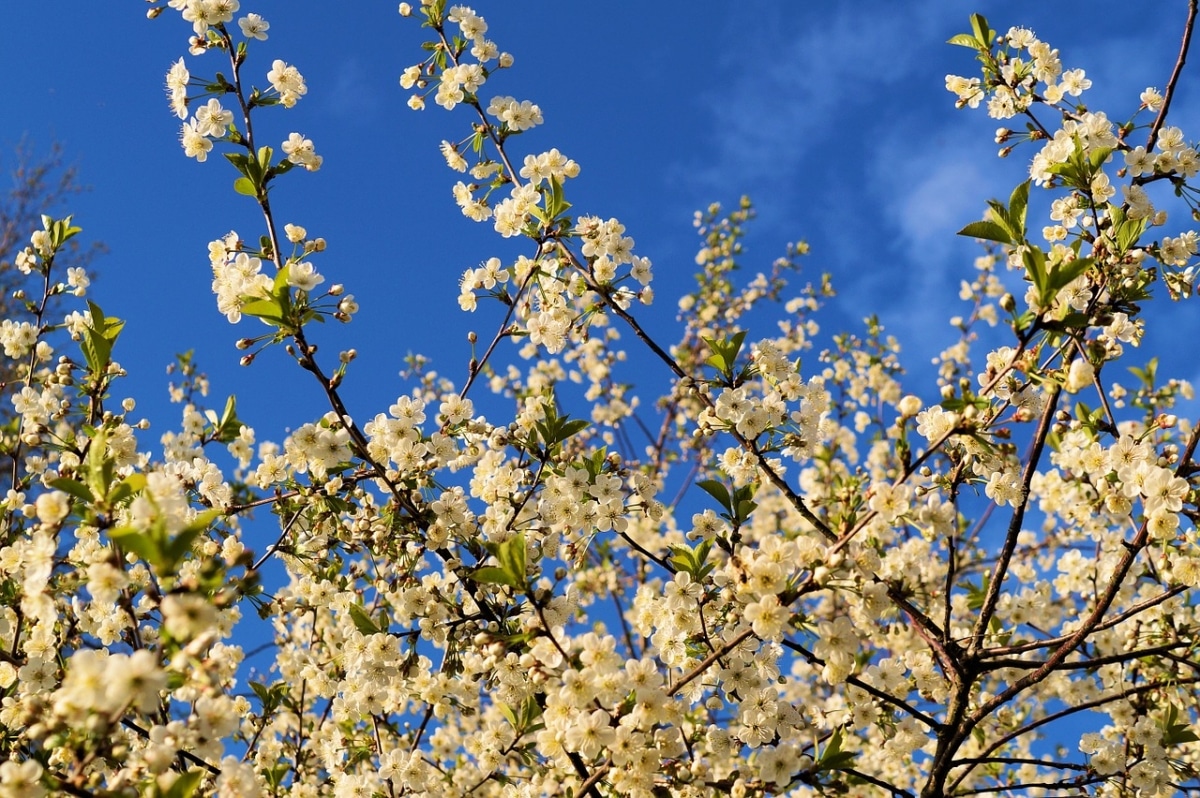
This is a fruit tree that, It not only has to be grown outdoors, but it is also necessary that the climate be temperate, with mild or warm summers and winter with frosts. But also, you have to know how many hours of cold there are in your area because depending on it it will be better to choose one variety or another.
Soil or substrate
- GardenAlthough it has a preference for those somewhat limestone lands, it is not really very demanding. But it needs the land to be rich in organic matter, as it cannot grow on poor soils.
- Flower pot: We are talking about a tree that is better to be grown in the ground, but during its youth it can be grown in a pot if it is filled with substrate for urban garden (for sale here) or mulch (for sale here) with 30% perlite (for sale here).
Irrigation
It is quite demanding of water, needing about 1200 mm of precipitation per year. So, you have to water frequently but without overdoing it, about 3-4 times a week during the summer, and 1-2 times a week the rest of the year. If it rains regularly in autumn and / or winter, it will not be necessary for us to water as often.
Subscriber
Cherry it is recommended to pay from the end of winter, to help you produce many flowers and leaves, until early fall in order for its fruits to ripen without problems. For this reason, we will use organic fertilizers if possible, since being edible cherries we want to be able to consume them as soon as they are ripe, without having to wait.
What fertilizers to use? For example, guano (for sale here) applied at the beginning of the season will help it to resume its growth as it is rich in nitrogen; but as soon as its flowers begin to wither and produce fruits, it will be better to apply a specific organic fertilizer for fruit trees, such as this which is rich in potassium. Potassium is an essential nutrient for the correct ripening of the fruits.
Cherry tree pruning
La cherry tree pruning aims to improve the productivity of the tree by keeping it with a suitable structure. Drastic pruning should be avoided, since this would not only damage it, but also reduce its life expectancy since it would be more prone to having pests and suffering from diseases.
When is made? The ideal is to prune it in autumn, when it has run out of leaves, or at the end of winter, before bud break. A »cleaning» of the plant has to be carried out; that is, remove dry, broken branches and those that look sick; and then we will proceed to make a thinning, only if there are branches that intersect, or if there is one that is growing more than the rest.
Another thing that can, and in fact should be done to make the collection of fruits easier, is the height pruning. It is done at the end of the summer, and consists of "forcing" it to produce lower and lower branches, cutting back the ones it has a little (it will depend on the size of the plant in question, but in general it will be less than a third) each year.
Pests
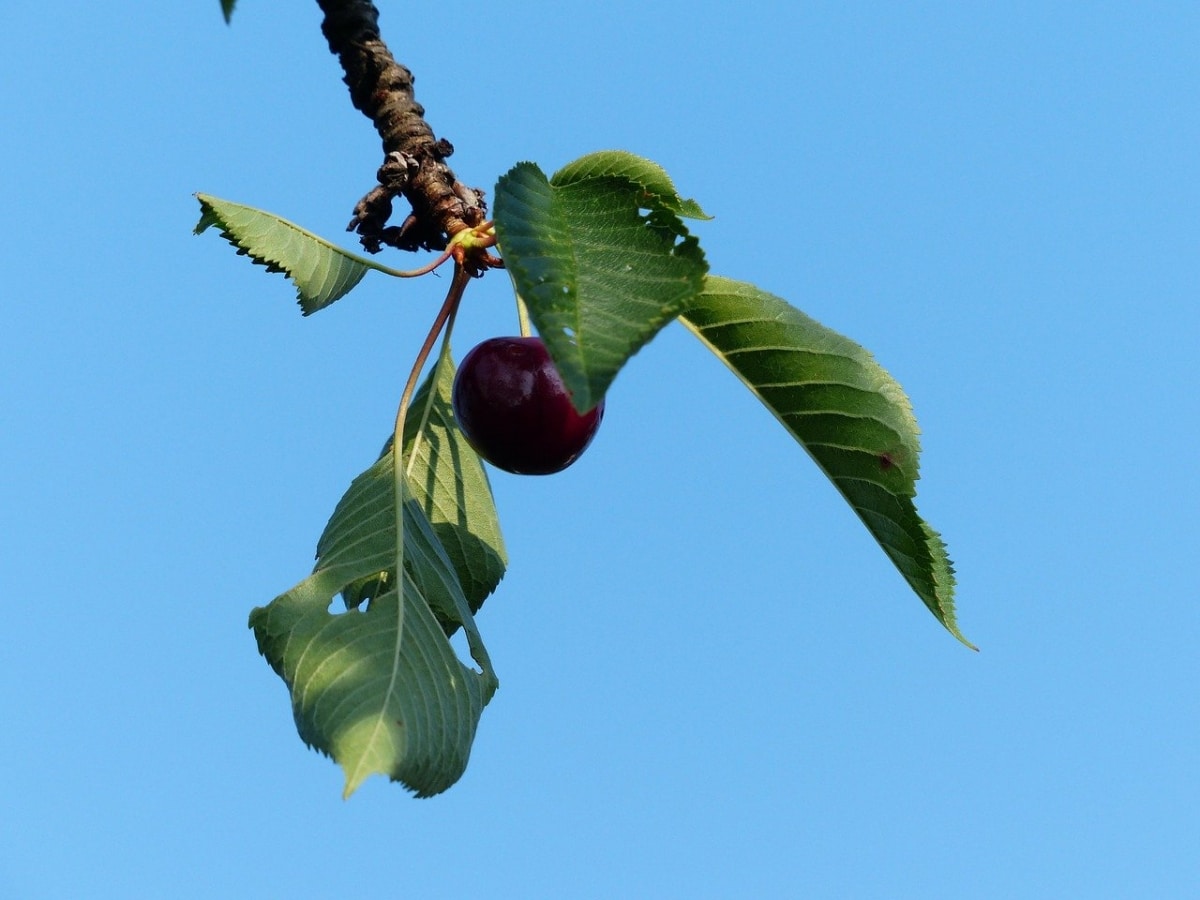
The pests of the cherry tree are the following:
- Cherry fly: the larvae of this fly eat the cherries. They are between 4 and 6 millimeters long and are whitish in color. It can be treated with specific traps for this type of flies (for sale here).
- Birds: They are not a pest as such, but they do enjoy eating cherries. It can be avoided by putting scarecrows.
- San Jose louse: It is a type of scale, limpet type, that feeds on the sap of the leaves. It is eliminated with anti-mealybug insecticides (on sale No products found.). More information.
- Aphids, especially the black: they are very small insects, about 0,5 cm long, that also feed on the tree's sap, specifically on the leaves. It is fought with anti-aphid traps. More information.
Management
The diseases you may have are:
- Anthracnose: it is a disease transmitted by fungi that causes the appearance of brown spots on leaves and fruits. It can be treated with fungicides containing copper (for sale here). More information.
- Screening: also known as pellet, it is a fungal disease that affects both the leaves and the fruits, which can rot. Blackish spots appear on both sides. It is advisable to treat with fungicides that carry copper in winter.
- Gum: it is a disease caused by the phytophthora fungus. The diseased tree will secrete a gummy amber substance through the wounds, usually from poorly performed pruning. It is fought with fungicides, such as copper oxychloride during the season. More information.
- gnomony: it is a fungus that damages the leaves, which appear with yellowish spots on their surface, and in cherries, which end up with reddish spots. It can be treated with fungicides containing copper oxide, as well as removing the affected parts.
- Monilia: known as brown rot, it is a fungal disease that causes damage to leaves and fruits. These dry up and eventually die. The most effective treatment is preventive, during autumn and winter, with fungicides that contain copper. More information.
- Xylella fastidiosaAlthough this is a bacterium that affects almond trees more, it can also infect cherry trees. The leaves will look as if they are burned, dry, and will be falling rapidly. It does not cause damage to the fruits. The treatment must be preventive, keeping the trees well watered and fertilized, and avoiding excessive pruning. More information.
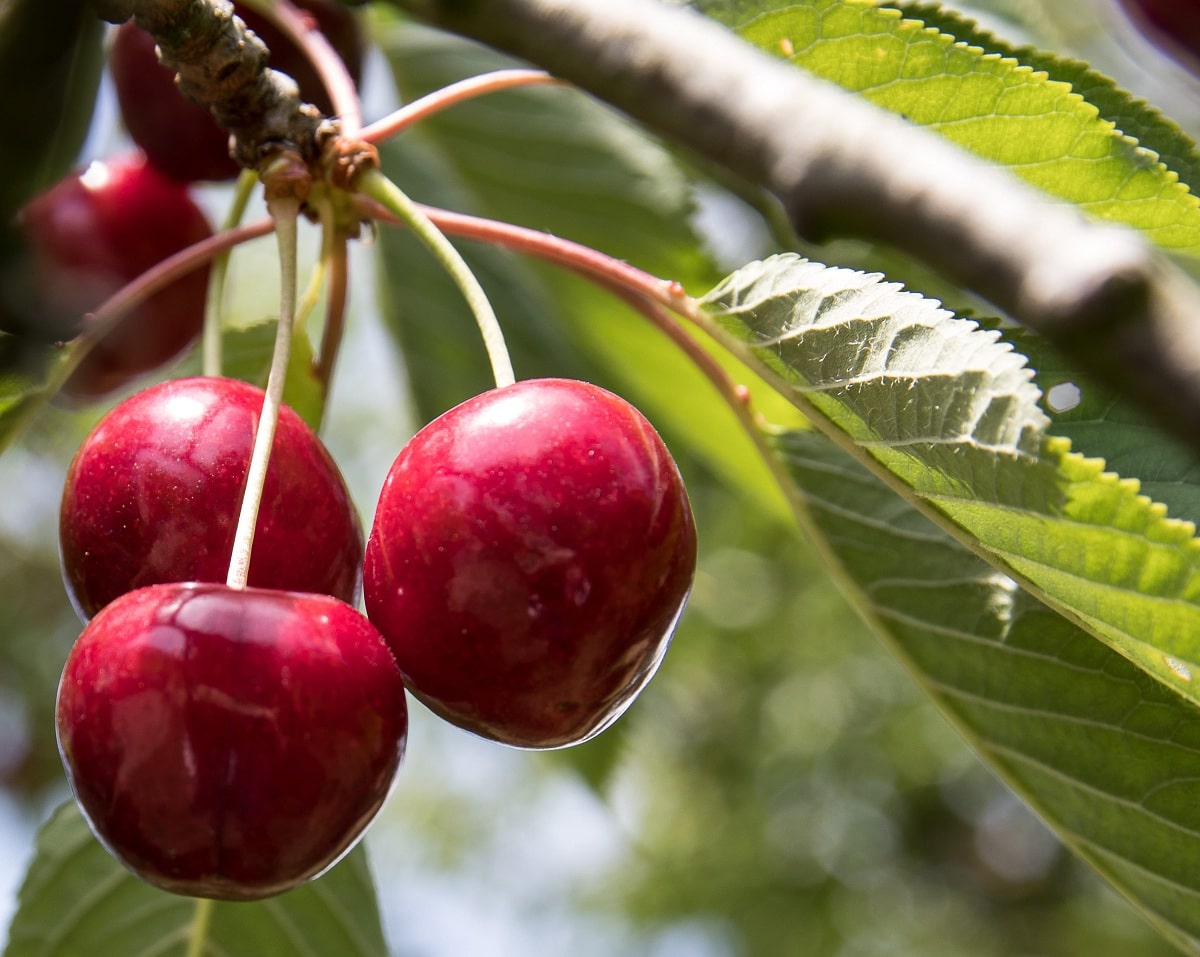
Multiplication
It can be multiplied by seeds, although the most used method is by grafting. Equally, let's see how they are made:
How to germinate cherry seeds?
They must be sown in autumn or winter, in pots with soil for seedlings (for sale here) abroad. They need to be cold to germinate, so this is very important. We will put them in a sunny area, and we will keep the substrate watered. Likewise, it will be necessary to carry out preventive treatments with fungicides that contain copper to prevent fungi from destroying them. If all goes well, they will germinate in spring.
How to graft a cherry tree?
It takes place in late winter, on patterns such as the Santa Lucia Cherry (prunus mahaleb), or other cherry trees (Prunus avium). As rootstock (i.e. the rooted plant) a cherry tree that already has a woody or semi-woody trunk and branches is used. A simple cleft graft is usually made, which consists of cutting a branch of the rootstock and making a cleft cut of about 3 or 4 centimeters. Then, the branch or graft is taken, and it is introduced in this cleft and then everything is joined together with graft tapes, or with raffia rope.
Plantation
If we want to plant a cherry tree in the orchard or in the garden we have to do it in spring. In the event that we have several, we will put them at a distance of about 3 meters apart.
And if we have to move it to a larger pot, we will also do it this season, but only if the roots come out through the drainage holes, or if it has already run out of space to continue growing.
Harvest
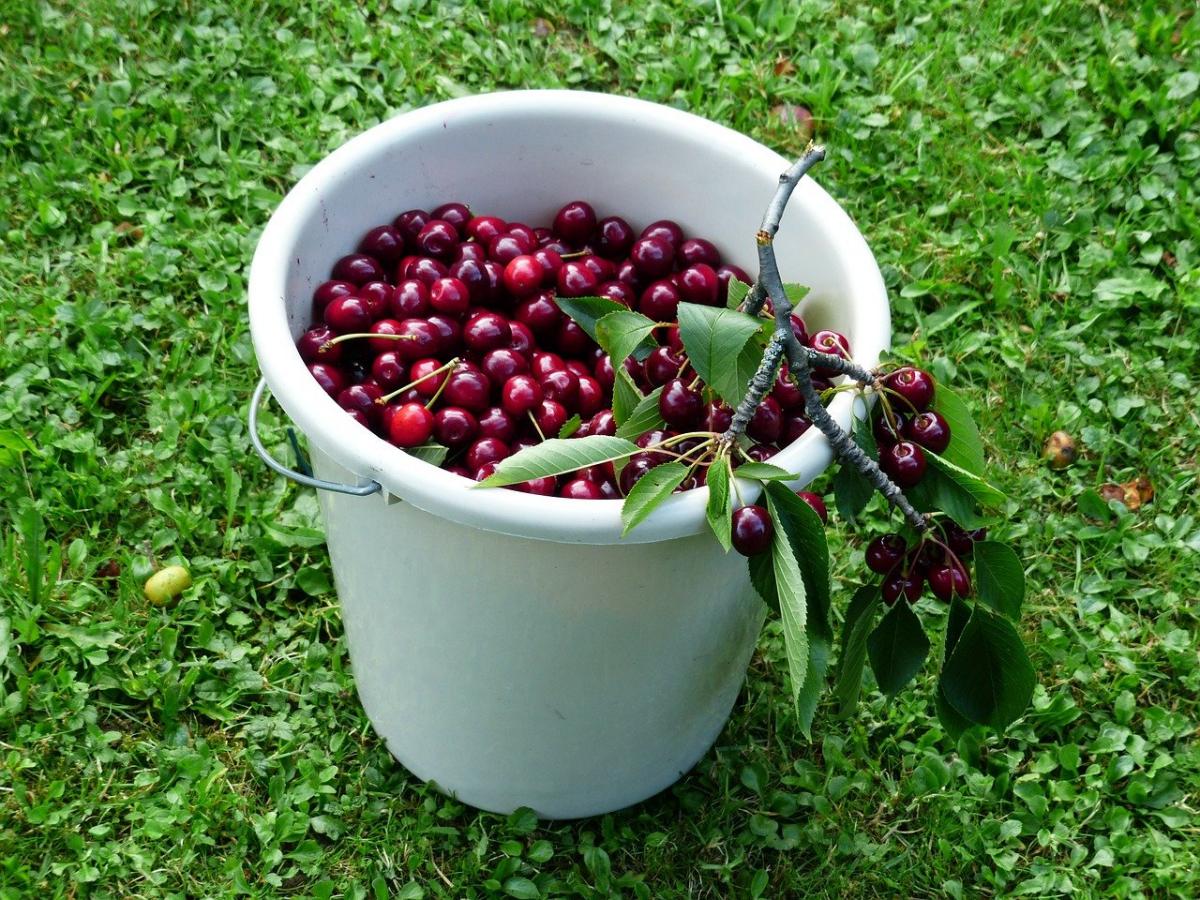
The cherries are harvested between late spring and late summer, depending on the variety. It must be done when they have reached the final size, and when when touched they feel firm but somewhat soft when pressed gently.
Later, we can consume them at the moment, or store them in the refrigerator in a closed tupperware where they can be up to two weeks. They can also be kept at room temperature, but in this case they will last a maximum of 3 days.
Rusticity
Cherry very well resistant to frosts down to -20ºC, but the late ones hurt him.
We hope you liked what we have told you about the cherry tree.